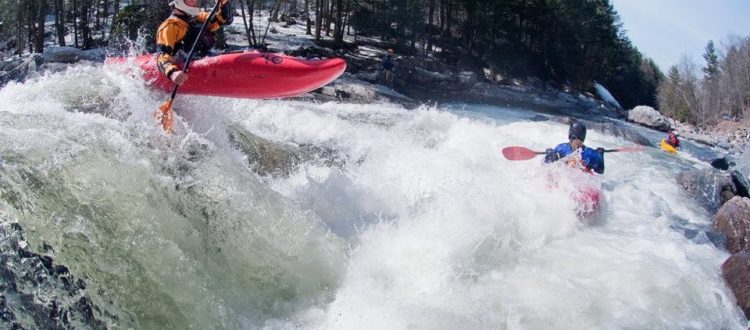Reading the River: What to Look Out For
Any good boater knows that the river has it’s own natural set of red, yellow and green lights as well as danger and do not pass signs. Knowing what these natural features mean and how to understand them, is what makes a good boater a great one. Keep an eye out for specific natural features, or changes in the flow and direction of the water to stay in the know of what obstacles might lie ahead. The following list is a crash course, or rather smooth line tutorial, on what to look out for when you’re on your favorite river or creek.
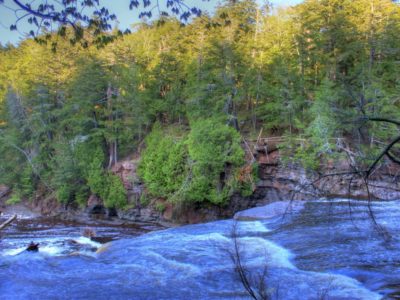
Strainers
Strainers are usually pretty easy to spot, but regardless there are times we find ourselves face to face with a branch or limb that’s not so friendly. These are trees, limbs, vines, branches, strange locals or anything else obstructing your line. Strainers can also be large items submerged, like a log. Debris like tires or trash that unfortunately end up in our rivers need to be watched for to. Like a spaghetti noodle in a strainer that stays in the bowl when you drain the pasta water, that noodle is you in your kayak against an overhanging tree. Not a good spot to be! It’s better to bail out than to get seriously pinned against a dangerous strainer if it comes down to brass tacks.
Upstream and Downstream V’s
Knowing how to spot upstream and downstream V’s can help you out tremendously while on the river. An upstream V is an indication that there’s an obstruction in the river, and the exact location of the V depends on the depth of the obstruction. If the rock or lurking river monster is deeper, the V will be below the actual obstruction as opposed to right on top of it in shallower water. These you want to avoid, as hitting one sideways could cause your boat to flip. Downstream V’s however, usually indicate a safe channel with obstacles on either side. Look for dark current in these downstream V’s, indicating it’s deep enough to run.
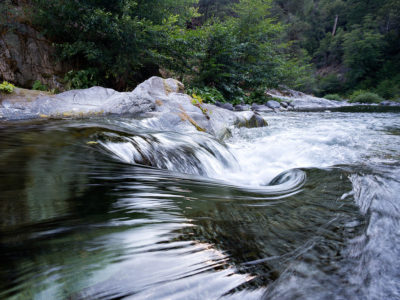
Eddies
Eddies – the friendliest of all natural river features! Eddies are a good place to hang out and grab a snack from your drybag after you just got through some ridiculous rapids and don’t even know how. These areas are where the river current slows and often reverses, and are typically characterized with a circular flow pattern. The best eddies are on the downstream side of an obstruction, typically a big ass rock. They can also be found behind midstream boulders or inside the bend of the river. These “time out” spots are formed anywhere something gets in the river’s way forcing it to slow down or make a turn. Heads up though, in faster moving water “eddy lines” are created where you’ll encounter reverse flow upon entering, so check your line before entering and exiting. Steady Eddy.
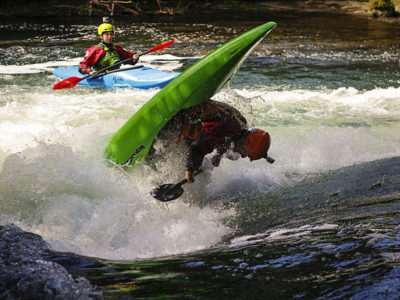
Recirculating Holes
These can be the do not enter, one way street, and wrong way sign of natural river features. Holes can also be a fun place for kayakers to freestyle and playboat, and have different indicators of whether they’re naughty or nice. A hole is created by water flowing over an obstacle creating a gap that needs to be refilled. The river refills this gap, by folding back on itself and flowing back upstream, creating a continual recirculating flow of water. This article from Canoe & Kayak Magazine has a good breakdown to determine if a hole you’re looking to paddle will either wreck your day or be an awesome play spot.
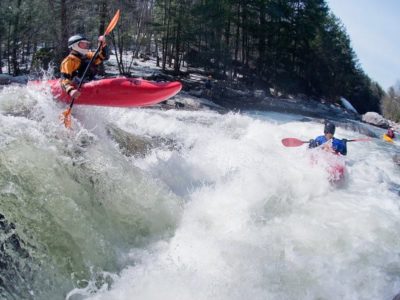
Horizon Lines
Not to be confused with a stunning horizon line pool edge, it does mean the same thing essentially. Big drop ahead. Anytime you’re boating and see a natural horizon line on the water, this would be a good time to catch an eddy (since we know what those are and how to catch them now!) and scout what’s ahead especially if you’re unfamiliar with the river. It’s virtually impossible to see what the situation and rapid is like below a horizon line, or if there’s boaters down below.
Mother nature always wants you to have fun and be safe while on the water, so keep an eye out when she’s showing you the way to go or when she’s saying not to do something or you’ll be sorry. Remember to plan ahead, and when in doubt scout it out!

